
views
X
Research source
The final court of appeals for all cases is The Supreme Court of the United States. [2]
X
Research source
Each court has its own docket, or list of cases that have been filed for that court's review. Docket numbers, sometimes called file numbers or case numbers, are how the court identifies each case. Included in the numbers are codes telling the judges, clerks, and lawyers when the case was filed and what type of case it is. Learning to understand the code will help you look up a docket number and get information on the court proceeding.
Gathering Information

Identify the information contained in a docket number. A docket number identifies a case as it makes its way through the court system and appeals process. If you are a defendant or party to a civil case, you'll need this number to file documents on your own behalf. If you interview an attorney to take your case, they may ask for your docket number so they can research your issues. Also, with the docket number, you can follow cases that you are interested in by tracking the documents that are filed by all parties and the court. The docket number is critical if you want to order copies of documents from the federal court archives. In most cases, criminal and civil proceedings are public record. Anyone who knows the docket number can look at the public file. Some courts, including federal court, are fully computerized and all the documents are accessible via their website. In state courts, you may have to ask to see the public file at the courthouse. Cases involving juveniles are usually not accessible to the public. In divorces, reports dealing with child custody, such as psychological evaluations, are not public record. The court clerk may not even give out a docket number for a juvenile case. Courts keep a running diary of the court's actions in the case files. These case notes can summarize appearances, court dates, arrest warrants, convictions, and sentencing. Since people may be involved in more than one issue, you'll need to know the docket number to ensure you are following the right case.

Identify where the case is being heard. You need to know the state and county where the case is being heard, and whether it is a state case or federal case. Since docket numbers are assigned on a court by court basis, different courts may use the same file number for two different cases. Clerks assign docket numbers based on their court's coding procedure. A state court docket number is very different from a federal court docket number because the two systems have different coding procedures.

Figure out what kind of case it is. Criminal cases, for example, have different letter codes from civil cases. While two cases may have the same date or file number, they will have different letter codes, such as CR for criminal and CV for civil.
Looking Up a State Court Docket Number

Find the docket number on the case documents. Most documents filed with the court will include the docket number, so if you have a copy of the Complaint, Answer, or a motion, there's a good chance the docket number is on one of those. The docket number will usually be in one of the upper corners of the first page. Double-check the names to be sure you have the right docket number. A person may be involved in many cases, each with its own case number.

Find the docket number by contacting the court clerk where the case is being heard. This is the most straightforward way to get the case number. As long as you know the party's name and the county where the case is heard, the clerk can quickly access the docket number. The clerk can also give you basic public information such as the next hearing date. Contact the court clerk by phone or in person at the courthouse.
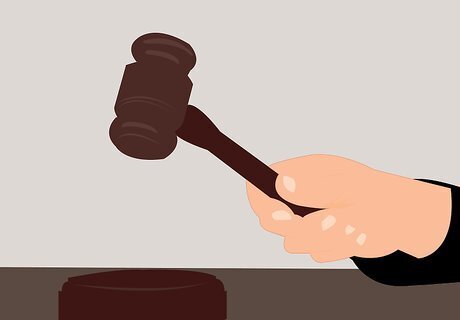
Go to the courthouse in the county hearing the case. Even if you can't speak with the clerk, if you have the correct spelling of the defendant's name in a criminal case or at least one of the parties in a civil case, you can look up the docket number if the court has a public computer terminal. Bring a notebook, as not all courts offer printing services. If printing is available, there will likely be a charge per page.
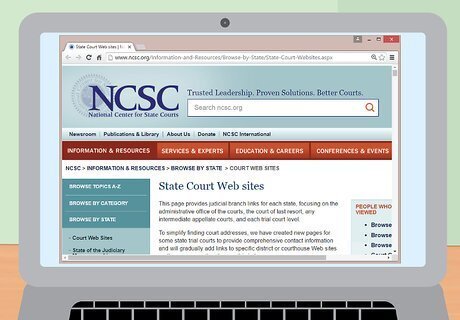
Find the docket number with the state's online search system. Many states have computerized their records. To find the docket number, you will need a minimum of the last name for one party and the court hearing the case. The more information you have, the better results you will garner in your search. Many states have dozens or hundreds of courts, so check the National Center for State Courts, which maintains a list of state court websites.
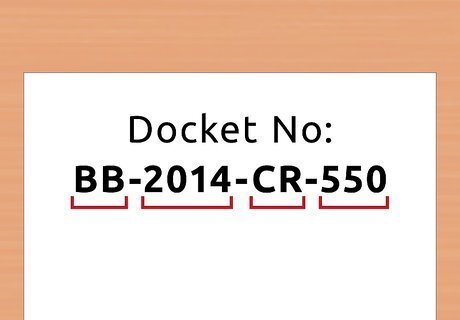
Interpret the information contained in the docket number. Knowing a few simple codes, you can tell a lot about a court case by looking at the docket number. Court case numbering conventions vary by jurisdiction, but there are some similarities. If a docket number includes the code "CR" it is probably a criminal case, either a felony or misdemeanor. A "CV" code typically stands for a civil case. A "J" in the code usually means it is a juvenile case and you will have difficulty getting information about the proceeding. Juvenile cases are often confidential to protect the child's identity. A typical state court docket number will include the county, the year of filing, the case type code, and the numerical file number. Therefore a Kansas court case styled "BB-2014-CR-550" was filed in Bourbon County (BB,) in 2014, as a criminal case (CR,) and was the 550th case filed in 2014.
Looking Up a Federal Court Docket Number
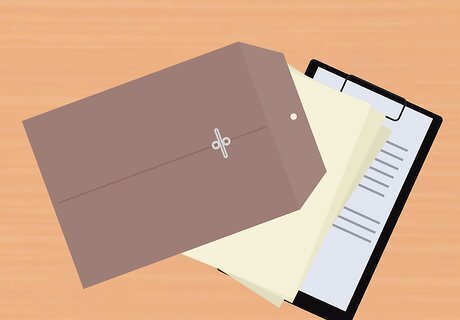
Retrieve the docket number from a court document. If you have access to a hard copy or online digital copy of a pleading, the docket number will usually be one of the upper corners of the first page. Verify the names to make sure you have the right docket number. A person may be involved in many cases, each with its own case number.
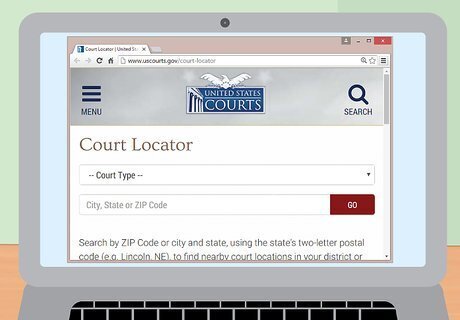
Identify which federal district court is hearing the case. If you know the city or state, you can use the federal government court locator to narrow your choices from the 94 district courts spread across 13 circuits. A map of the circuits can also help you narrow down which court you are looking for. For example, the 10th Circuit Court of Appeals includes district courts in Utah, Wyoming, Colorado, New Mexico, Kansas, and Oklahoma. The circuit website will direct you to the online sites for the district courts.
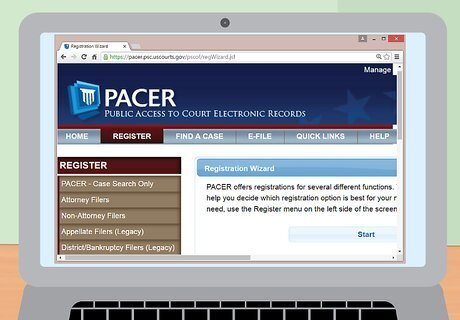
Register for a PACER account. PACER, short for Public Access to Court Electronic Records, is the portal to "case and docket information online from federal appellate, district, and bankruptcy courts." PACER is the most comprehensive archive of federal court records and the quickest and easiest way to find federal docket numbers. Give PACER a trial run with the free access training site. You can run sample searches against a database created for training purposes. There is also a detailed user manual to help with questions.

Select and register your billing method. Registration for PACER is free and you can conduct searches for free. Usually, a free name search will give you the docket number you need. However, you need to register a payment method in order to access the actual documents. The typical fee is $.10 per page. You can print on your own printer or save them to your hard drive. There is no charge to read judicial opinions. If you are a party to the case you will receive one free copy of each document. There is no charge to view the documents at a public courthouse terminal. You are not charged unless you print them.

Decide if you need help from the PACER Service Center. If you are having trouble with the system, you can request help from the service center. You will be charged $30 for each name or item searched. If you need copies of documents, you will be charged $.50 per page for printing and mailing.
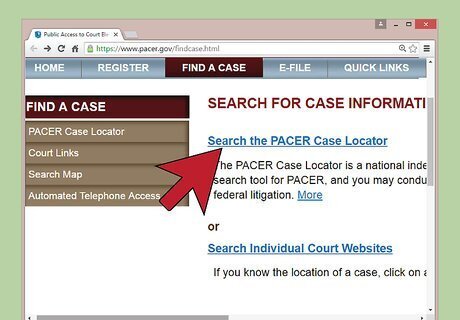
Search for your docket number using PACER. If you know the court, you can go straight to the court's website and log in to PACER there. This method will narrow your search and give fewer redundant results. If you don't know the court, you can use the nationwide search option. You can search by the defendant's last name in criminal cases or by one party's name in a civil case. If you are interested in the lawyer, you can pull up all of the lawyer's cases using the last name.

Visit the clerk's office at the federal courthouse. If you do not have digital access, the court clerk at the federal courthouse can assist you in finding the docket number and viewing the physical file. Security at federal courthouses is very strict. Be prepared to show identification, go through a metal detector, and be subject to search. Federal courthouses and court clerks' offices are very busy. Be prepared to wait for a file to be retrieved. Viewing physical files at a federal courthouse is not anonymous. Be prepared to present valid photo identification and fill out a request to view the file, including your reasons. Copies of documents pulled in person are more expensive than from the online system. About one year after the case or appeal is complete, the physical file is sent to the federal archives. You cannot review a file in person at the archives, but can ask the court to order the file for a fee. You can also order copies of the file if you have all the required information, including the docket number.

Understand the federal docket numbers. Court dockets are a collection of all documents and materials related to a particular court proceeding. When a case is opened, the clerk assigns it a docket number. That number will not change, even after the case is resolved. Federal docket numbers usually reference the year the case was filed, a reference number, alpha case-type codes, the location of the filing, and the initials of the judge(s) assigned to the proceeding. For example, a federal docket number might look something like: 1:15-cv-03849-ABC(DEF) The 1 refers to a specific filing location. The 15 indicates that the case was filed in 2015. The cv indicates that it is a civil proceeding. The 03849 shows that it was the 3,849th case filed during that year. The ABC represents the initials of the district judge the case was assigned to and the DEF are the initials of the magistrate judge.
















Comments
0 comment